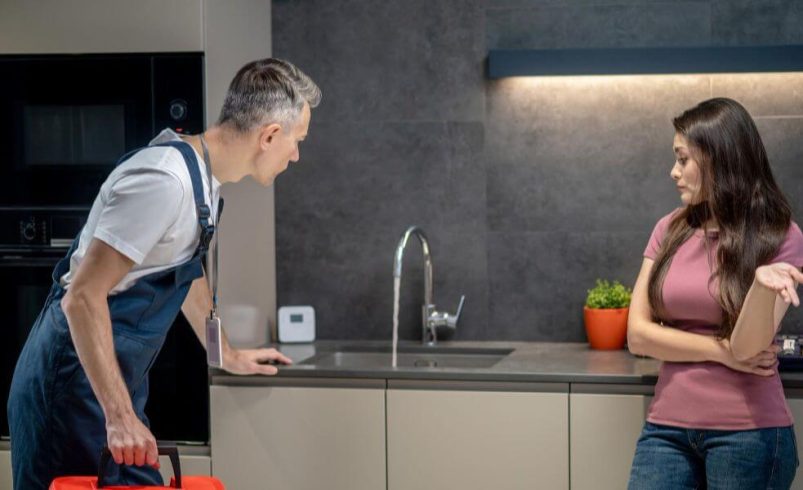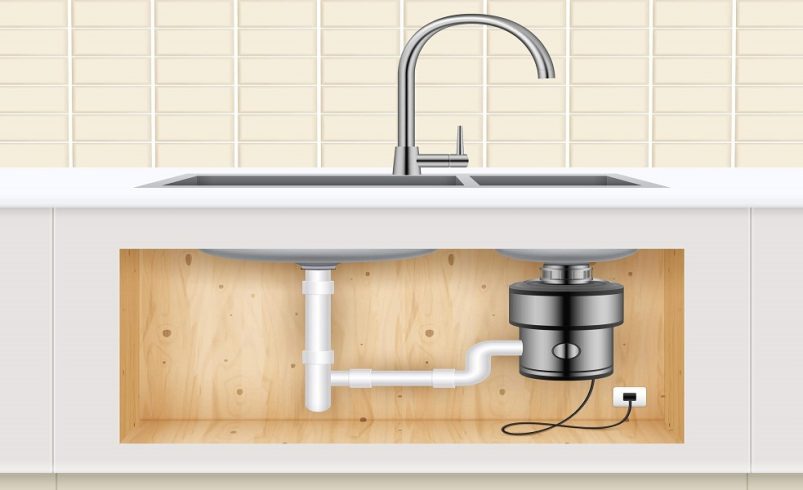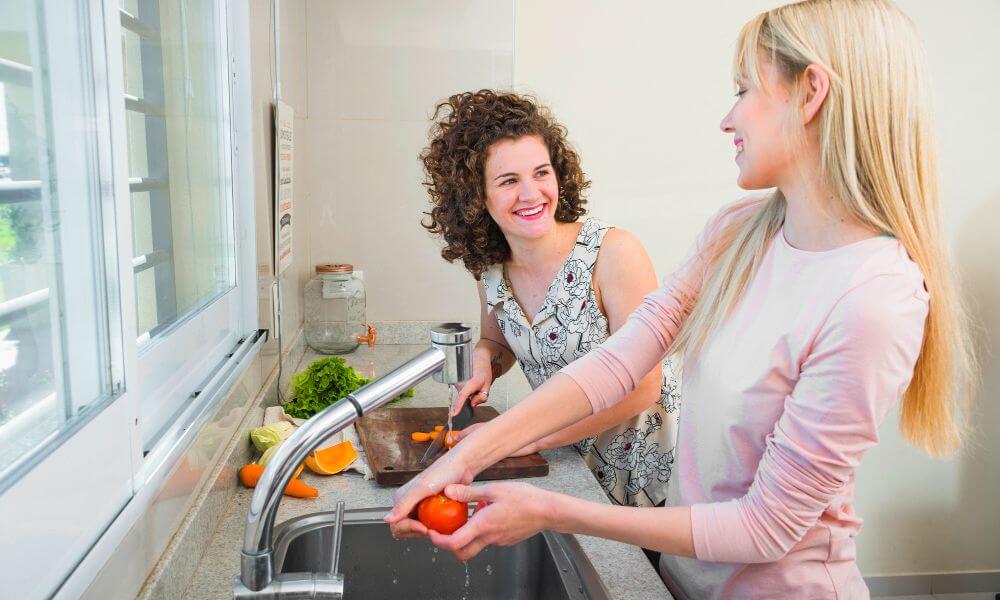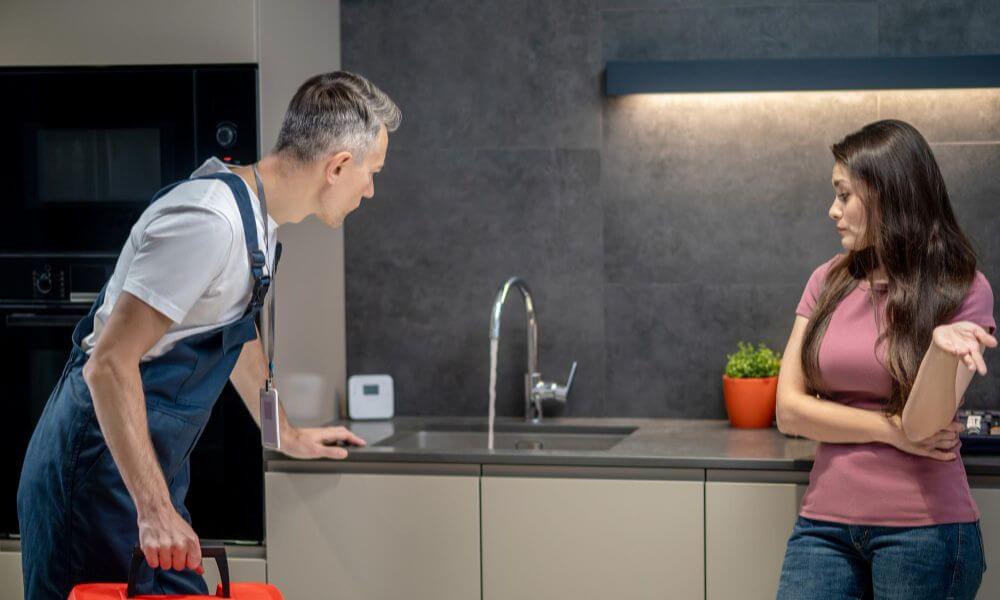How To Troubleshoot Low Water Pressure in Kitchen Sink
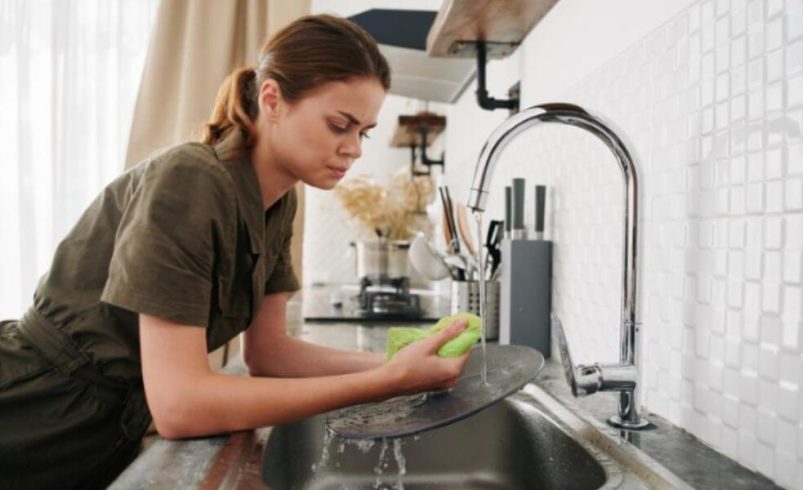

Low water pressure can be a nagging issue that affects your comfort and the functionality of your kitchen. It’s like watching your favorite movie on a low-resolution screen — you can make out the frames, but it’s just not the same rich, high-def experience.
You’re not alone in facing this plumbing problem. It affects homes of all sizes, and among amateur chefs under pressure, kitchen sink water pressure appears to be the most probable source of silent murmuring.
Low water pressure in kitchen sink is not a trivial thing. Not only does it slow down daily activities, but it might also be indicative of larger plumbing system issues. Fortunately, understanding the potential causes can lead you to a quick solution.
Cause of Low Water Pressure in Kitchen Sink
Water pressure issues in the kitchen sink can stem from various sources. Understanding these can help you identify the problem and fix it before it turns into a full-blown leak. Here’s a rundown of common culprits:
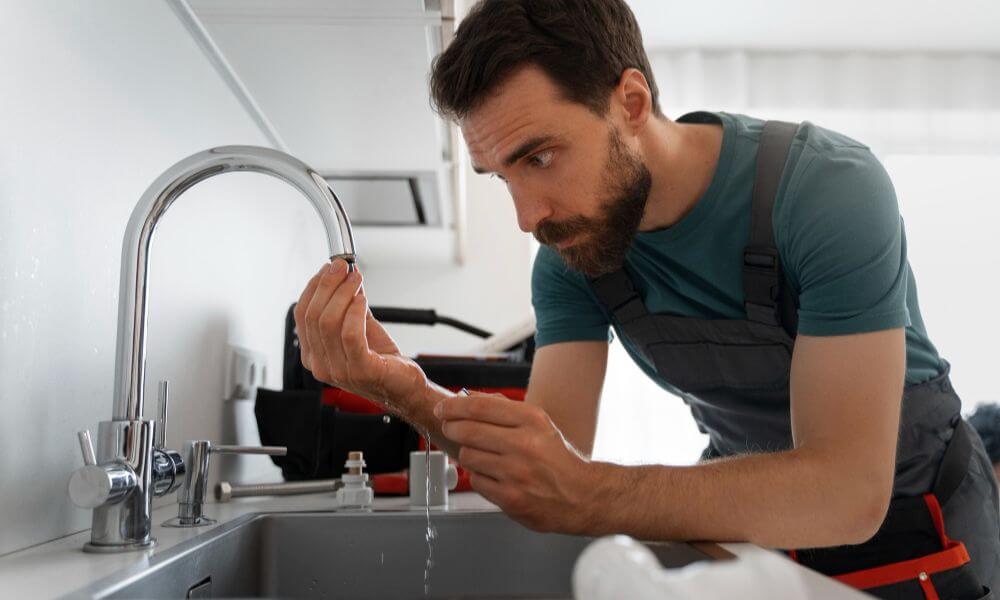
Broken Water Lines
A break or damage in the water supply line leading to the kitchen can significantly reduce your water pressure. This kind of damage is often caused by corrosion or sudden shifts in the ground or walls, which can lead to cracks or complete breaks in the line.
Aerator Clogs
The aerator, the small screen at the end of your kitchen faucet, can trap debris and mineral deposits over time. Even tiny particles can cause significant obstruction and drastically reduce the water flow.
Cartridge Clogs
In newer, single-handle faucets, a cartridge controls the water flow and temperature. Like the aerator, it can become clogged with mineral deposits, debris, or even bits of deteriorating rubber or plastic, particularly in areas with hard water.
A Leaky Pipe
Leaks aren’t just a waste of water; they can also decrease the pressure. If water is diverting elsewhere in the plumbing system before it reaches your faucet, you will experience low pressure in the kitchen sink.
Shut-Off Valve Errors
Your sink has a shut-off valve that can be the cause of the issue. If not fully opened, this valve can limit the water flow. Additionally, old or faulty valves may fail to open to their maximum capacity, reducing pressure.
Water Heater Problems
Water pressure across your entire plumbing system, including the kitchen, can be affected by your water heater. Sediment buildup in the heater can slow the overall water flow. A malfunctioning pressure regulator can also be at play, leading to low water pressure.
How to Fix Low Water Pressure in Kitchen Sink
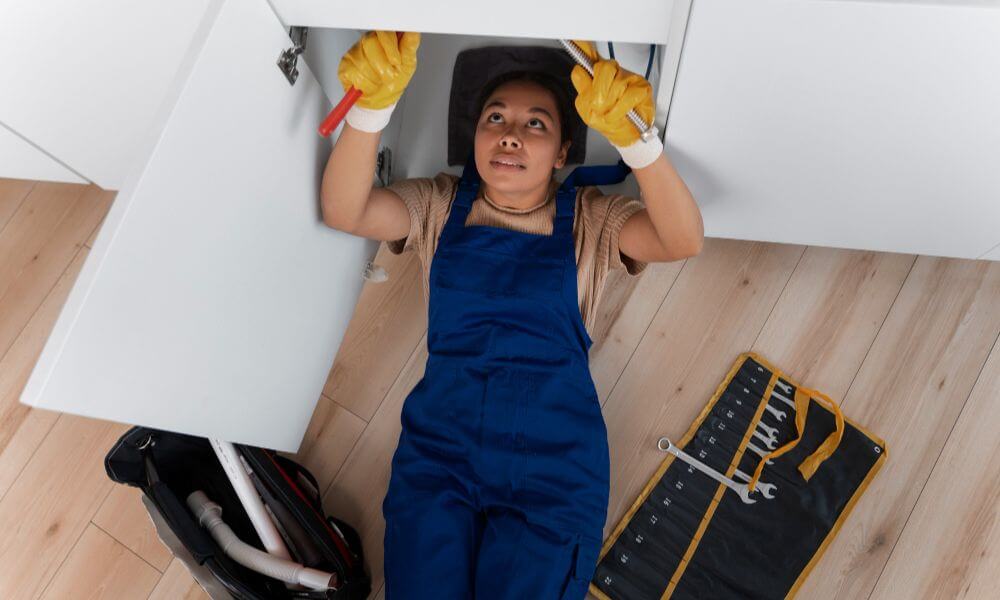

Step 1: Check Other Faucets
Try turning on other faucets. If all your faucets have low pressure, the issue may be with your municipal water supply or your residence’s plumbing system. If the problem is isolated to the kitchen sink, you’re looking at a localized issue.
Step 2: Inspect for Visible Leaks
Carefully examine the area under the sink for any signs of water. Even a minor leak can cause a pressure drop, so don’t ignore the smallest puddle.
Step 3: Clean the Aerator
Unscrew the tip of the faucet and take out the aerator. Rinse off any debris that you see, and use a brush to gently scrub away any buildup.
Step 4: Flush the Faucet’s Cartridge
For faucets with cartridges, turn off the water supply, dismantle the faucet, and check the cartridge. Clean or replace it if necessary
Step 5: Check and Reset the Shut-Off Valve
Locate the shut-off valve for your kitchen sink. Ensure it’s fully open and aligned correctly. Sometimes, they can get turned off unintentionally or during maintenance work and are not completely re-opened.
Step 6: Consider Your Water Heater
If the issue involves only hot water, the problem may be with the water heater. Ensure the temperature is set correctly and that the unit is not too old and in need of replacement.
Tips and Tricks for the DIY Enthusiast
Create a Plumbing Maintenance Schedule
Even if your pressure is restored, don’t wait for the next problem to hit. Regularly clean your aerators, check for leaks, and inspect valves and water heater connections. A little prevention can save you from a backing up call to the professionals.
Educate Yourself
With a few hours of education (from reputable sources), you will understand your plumbing system’s basics. Educating yourself will save you a lot of guesswork and possibly even some cash.
Safety First
Know how to safely turn off the water in your home, and if you are unsure about handling any plumbing component, it is always best to call in the professionals.
Conclusion
Low water pressure in kitchen sink can be a source of frustration, but it’s not an unfixable problem. By methodically addressing the various potential causes, you can restore your water flow and keep your kitchen running smoothly.
Remember, prevention is key. Regular maintenance and vigilance can spare you the inconvenience and potential expense of a low-pressure headache. Whether you are a seasoned homeowner or just starting, taking care of your home’s plumbing systems is a task that pays dividends in the long run.
Restoring water pressure may require some elbow grease, a few tools, and possibly a professional’s assistance. Nonetheless, the satisfaction of a functionally flowing faucet is a reward in itself. Now go forth and conquer those culinary challenges with the full power of your kitchen sink!
Frequently Asked Questions
What can cause sudden low water pressure in the kitchen sink?
If you experience a sudden drop in water pressure, it could be due to a water line break, supply blockage, or a malfunction in the sink’s internal components.
Is low water pressure a sign of more significant plumbing issues?
Low water pressure can signal significant problems, such as leaks or damaged water lines. Immediate diagnosis and correction are essential to prevent further damage.
Can I fix low water pressure in kitchen sink myself, or do I need to call a plumber?
Many low water pressure issues can be fixed with simple DIY solutions, such as cleaning the aerator or checking the shut-off valve. However, for more complex issues, it’s best to call a professional plumber.
